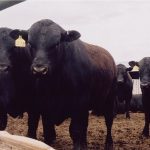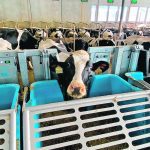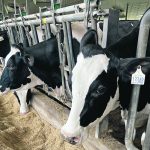Tag Archives Lactanet

Lactanet to update benchmark lifetime performance index

Manage cybersecurity risks

Beef-on-dairy hybrid options ranked using existing data
Lactanet partners with Angus group to help dairies that are moving towards becoming meat producers as well
Glacier FarmMedia – More dairy producers are interested in getting a slice of the beef pie these days. That’s led Lactanet to work with an U.S.-based Angus association to share genotyping of Angus bulls from Canada, the U.S. and Australia and improve breeding decisions for those hybrid farms. Brian Van Doormaal, chief services officer for […] Read more
Genetic tool recognized for reducing emissions
Companies receive climate action award for their work in helping develop a way to select cattle that produce less methane
CALGARY — Canadian research that sparked the world’s first official genetic evaluation program to help dairy farmers reduce methane emissions from Holstein cattle without harming milk production has earned an international award for climate action. “The award has been a real team effort, and it’s something that didn’t just come by chance,” said Filippo Miglior, […] Read more
Producers can select for methane-efficient cows
Long-term genetic selection would be less of an impediment to dairy farmers than cuts to fertilizer use or manure capacity
A world-leading approach to creating a methane-specific breeding index has been developed by Lactanet. Not content to wait until “sniffer” technology for measuring bovine methane emissions eventually becomes more affordable, the Canadian dairy data collection and genetics analysis organization developed the index based on milk samples. “Canada will be the first country globally to offer […] Read more
Farmers can select for methane-efficient cows
World-first approach could reduce a herd’s methane emissions by 20-30 per cent by 2050, help meet industry’s GHG goals
A world-leading approach to creating a methane-specific breeding index has been developed by Lactanet. Not content to wait until “sniffer” technology for measuring bovine methane emissions eventually becomes more affordable, the Canadian dairy data collection and genetics analysis organization developed the index based on milk samples. “Canada will be the first country globally to offer […] Read more





